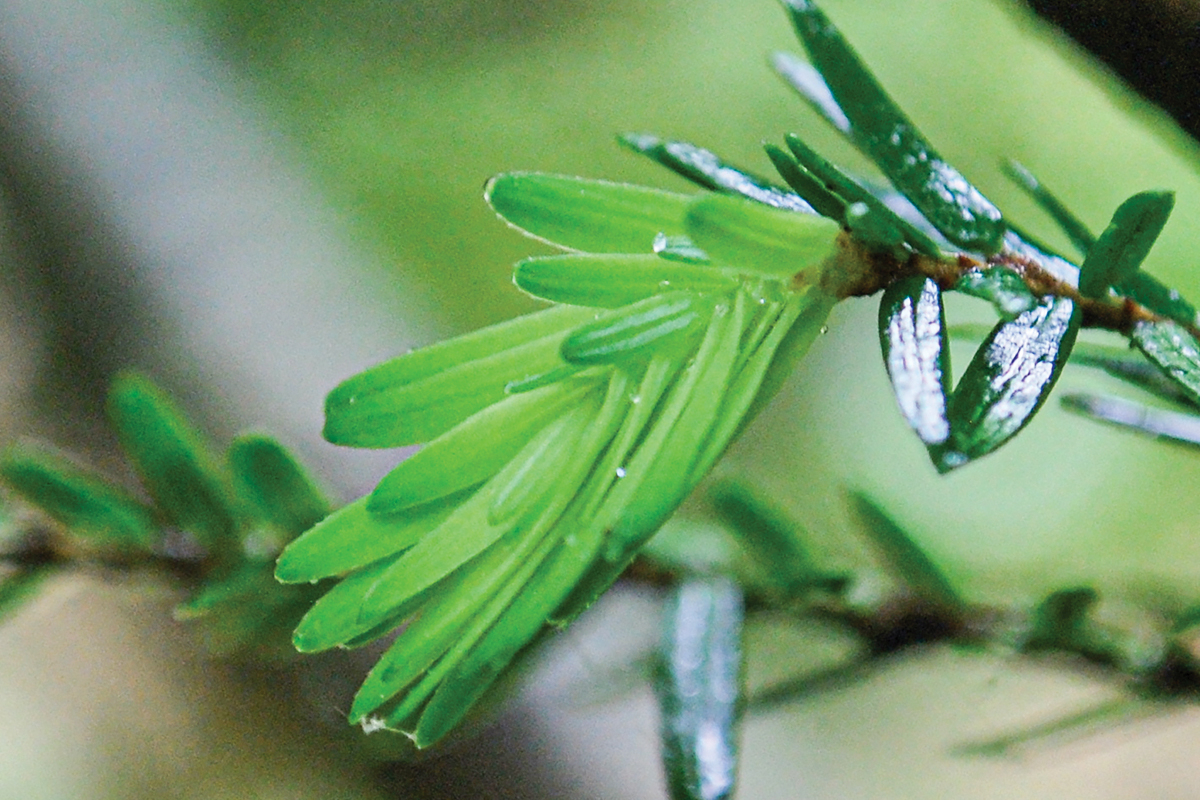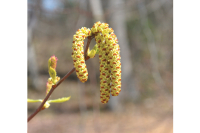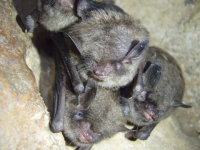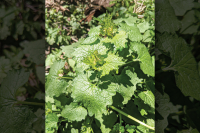Notes from a plant nerd: Hope for the Hemlocks
 Hemlocks once dominated the Southern Appalachian region, but due to the wooly adelgid infestation, their population has diminished significantly in recent years. Adam Bigelow photo
Hemlocks once dominated the Southern Appalachian region, but due to the wooly adelgid infestation, their population has diminished significantly in recent years. Adam Bigelow photo
In springtime, all things are possible. Everything around you that is alive is imbued right now with the same hopeful energy.
Everything is new, fresh and buzzing with renewed vigor, growth and hope. Everything is filled with the potential for hope, joy, elation, life and possibility that are the emotions and energy of Springtime.
For many, the word springtime evokes images of warm weather and sunny days. I’d like to remind everyone that warm weather all the time is really descriptive of Summer. Springtime brings all weather, and often in the same day. Warm, cold, rain and snow, frosts and flowers are all components of springtime, the freeze-thaw-freeze-thaw cycle that takes us out of dormant winter and into summer’s growth. And it is in springtime that all things are possible.
In springtime, there is hope. I recently got the opportunity to walk in the woods and talk with Dr. McBug, a.k.a. Richard McDonald of Symbiont Biological Pest Management Co. whose research and work with the Hemlock trees (Tsuga canadensis and Tsuga caroliniana) and the tiny exotic invasive insect that has been decimating them up and down the east coast of the US, the hemlock wooly adelgid (Adelgis tsugae) has given me hope, where I had thought there was none.
I had thought that this tiny invasive insect, which was accidently introduced to the United States on nursery stock of hemlocks from other parts of the world, had done its damage and that the hemlocks were on an inevitable decline leading to extinction. I had given up hope. But it is springtime, and all things are possible.
Sure, so many large and old hemlocks throughout Southern Appalachia have been decimated by the initial infestation and spread of the adelgid insect. But it turns out that if a hemlock reaches a state where less than half of its needles are infested (45%) then it will grow normally and begin to thrive. Especially young trees and saplings.
Related Items
What is helping these trees to reach this state of equilibrium? An introduced insect called Laricobus nigrinus, a type of tooth-necked fungus beetle that loves to eat the adelgid insects so much that it’s all they eat. These beetles are known as host-specific predators. And they are out there, in the forest right now helping to save the hemlocks. And it is working.
The adelgid won’t ever really go away, but with the help of the predatory beetle the infestation can be brought into a state of equilibrium where the damage wrought by the insect is not enough to kill the young trees, which will then have a chance of growing into the tall, stately stream-cooling trees that the old, dead hemlocks once were. And that is a balance that I believe we can all live with.
On the day I write this, the last Friday in March, I am as filled with the same hope, joy, elation and exuberance that is imbuing all life in the northern temperate world. Today marked the beginning of my ninth year of teaching about spring wildflowers with the first in the series of weekly wildflower walks that will continue on most Fridays throughout the season. And while my spirits were already buoyed with sharing my love of native wildflowers with the attendees on my walks, learning of and witnessing the spread of those predatory beetles has filled me with hope for the hemlocks, where before, I had none.
Even on my walks today I referenced that the hemlocks were dying. Some time ago I wrote a requiem poem for the dying hemlocks. But I should have known that this wasn’t the end for the mighty hemlock trees. For this world we live in is not linear but is cyclical. And Nature knows what she is doing. She knows how to heal. And she is begging for our help. And help is on the way.
(Adam Bigelow lives in Cullowhee. He leads weekly wildflower walks most Fridays and offers consultations and private group tours through Bigelow’s Botanical Excursions. This email address is being protected from spambots. You need JavaScript enabled to view it..)













